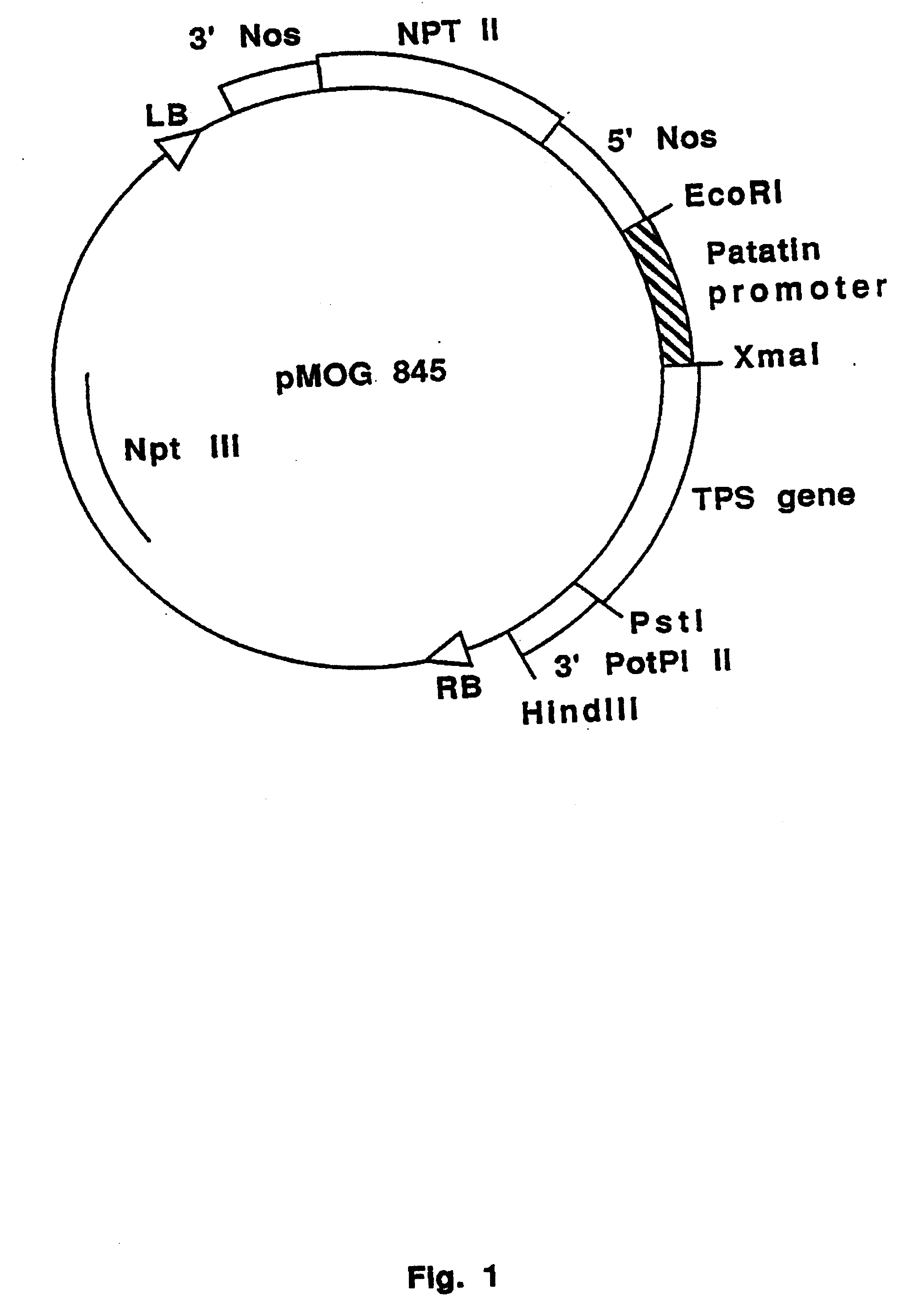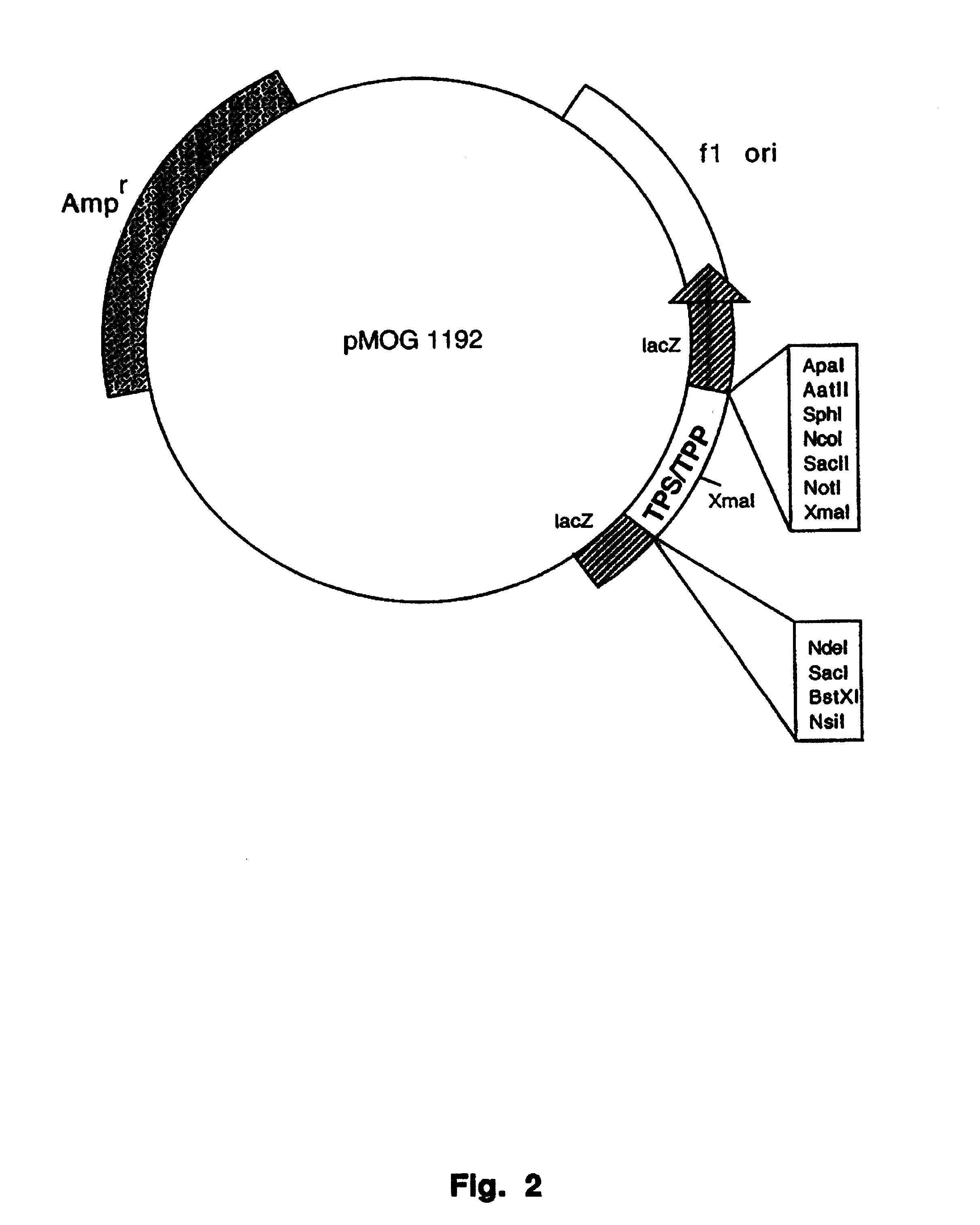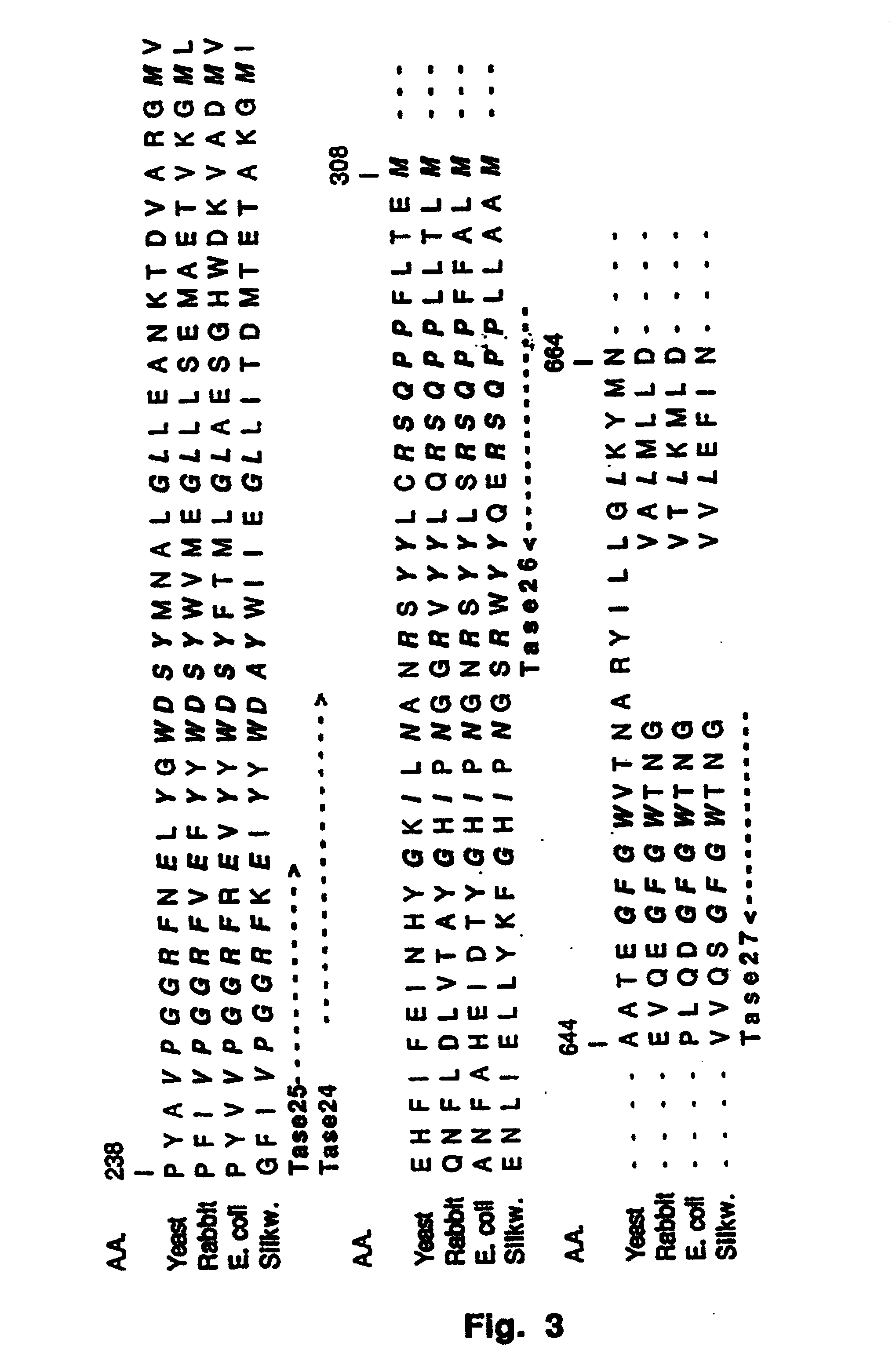Enhanced accumulation of trehalose in plants
a technology of trehalose and plant roots, which is applied in the direction of peptide sources, transferases, peptides, etc., can solve the problems of plant shoots which produce relatively high amounts of trehalase, and lack of ability to produce and/or accumulate trehalos
- Summary
- Abstract
- Description
- Claims
- Application Information
AI Technical Summary
Problems solved by technology
Method used
Image
Examples
example 2
Trehalose Production in Potato Micro-tubers Transformed With pMOG845
[0109] Potato Solanum tuberosum cv. Kardal tuber discs are transformed with Agrobacterium tumefaciens EHA105 harbouring the binary vector pMOG845. Transgenic shoots are selected on kanamycin. Micro-tubers (m-tubers) are induced on stem segments of transgenic and wild-type plants cultured on m-tuber inducing medium supplemented with 10.sup.-3 M Validamycin A. As a control, m-tubers are induced on medium without Validamycin A. M-tubers induced on medium with Validamycin A showed elevated levels of trehalose in comparison with m-tubers grown on medium without Validamycin A (Table 2). No trehalose was detected in wild-type m-tubers.
5 TABLE 2 Trehalose (% fresh weight) +Validamycin A -Validamycin A 845-2 0.016 --845-4 -- -- 845-8 0.051 -- 845-13 0.005 -- 845-22 0.121 -- 845-25 0.002 -- wT Kardal -- --
example 3
Trehalose Production in Hydrocultures of Tobacco Plants Transformed With pMOG799
[0110] Seeds (S1) of selfed tobacco plants transformed with the binary vector pMOG799 are surface sterilised and germinated in vitro on MS20MS medium containing 50 .mu.g / ml Kanamycin. Kanamycin resistant seedlings are transferred to soil and grown in a growth chamber (temp. 23.degree. C., 16 hours of light / day). After four weeks, seedlings were transferred to hydrocultures with ASEF clay beads with approximately 450 ml of medium. The medium contains 40 g / l Solacol dissolved in nano-water buffered with 0.5 g / l MES to adjust to pH 6.0 which is sieved through a filter to remove solid particles. Essential salts are supplemented by adding POKON.TM. (1.5 ml / l). The following antibiotics are added to prevent growth of micro-organisms: 500 .mu.g / ml Carbenicillin, 40 .mu.g / ml Nystatin and 100 .mu.g / ml Vancomycin. As a control, transgenic seedlings and wild-type plants are transferred to medium without Solacol. An...
example 4
Cloning of a Full Length cDNA Encoding Trehalase From Potato Tuber
[0111] Using the amino acid sequence of the conserved regions of known trehalase genes (E.coli, Yeast, Rabbit, B. mori) (FIG. 3), four degenerated primers were designed:
7 C C C CGT GT A TTAT GG GGI G TT IGA T TA TGGGAC Tase24 (SEQ ID NO:11) T A A TAA AG C CGGC TAA GT GTICCIGGIGGICGITT IGA T Tase25 (SEQ ID NO:12) CGT AG T GATG A A GGIGG TGI ICGI IAG TA TA Tase26 (SEQ ID NO:13) C CTCA G G C G AT A I C TTI CCATCC AAICCITC Tase27 (SEQ ID NO:14) G A GC G
[0112] Combinations of these primers in PCR experiments with genomic DNA and cDNA from S. tuberosum cv. Kardal leaf and tuber material respectively as template, resulted in several fragments of the expected length. A number of 190 bp. fragments obtained with the primer combination Tase24 and Tase 26 were subcloned into a pGEM T vector and sequenced. Several of the clones analyzed showed homology with known trehalase sequences. To exclude the isolation of non-plant derived t...
PUM
| Property | Measurement | Unit |
|---|---|---|
| thickness | aaaaa | aaaaa |
| pH | aaaaa | aaaaa |
| concentration | aaaaa | aaaaa |
Abstract
Description
Claims
Application Information
 Login to View More
Login to View More - R&D
- Intellectual Property
- Life Sciences
- Materials
- Tech Scout
- Unparalleled Data Quality
- Higher Quality Content
- 60% Fewer Hallucinations
Browse by: Latest US Patents, China's latest patents, Technical Efficacy Thesaurus, Application Domain, Technology Topic, Popular Technical Reports.
© 2025 PatSnap. All rights reserved.Legal|Privacy policy|Modern Slavery Act Transparency Statement|Sitemap|About US| Contact US: help@patsnap.com



